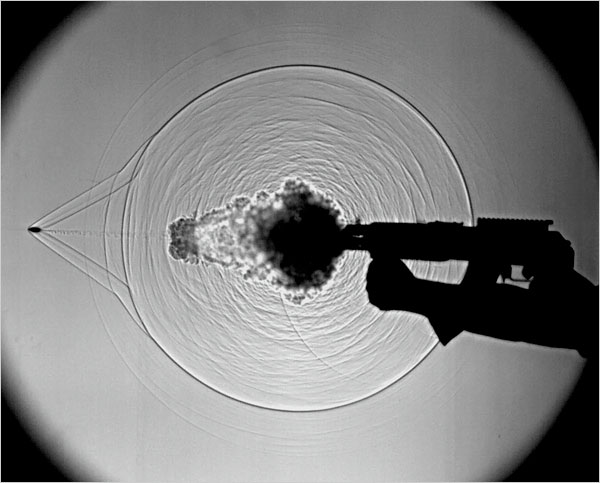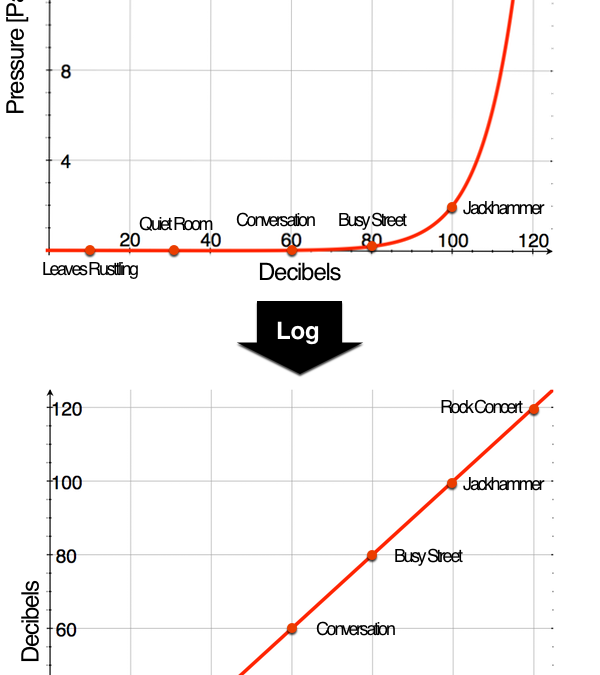The World Through Sound - Andrew (Pi) Pyzdek
Andrew “Pi” Pyzdek is a PhD candidate in the Penn State Graduate Program in Acoustics. Andrew’s research interests include array signal processing and underwater acoustics, with a focus on sparse sensor arrays and the coprime array geometry. Andrew also volunteers his time doing acoustics outreach and education as a panelist and moderator on the popular AskScience subreddit and by curating interesting acoustics news for a general audience at ListenToThisNoise.com.
Contact info: andrew@pyzdek.com
We are pleased to present a series of articles by former Acoustics Today intern Andrew (Pi) Pyzdek on basic acoustic principles in interesting and unusual ways that anyone, scientist and non-scientist alike, can enjoy. The intern program enables doctoral students or new acousticians who are members of ASA to pursue opportunities, and gain experience, in scientific publication. We invite other ASA members to follow this link to learn more and apply to become an Acoustics Today intern.
Introduction – by Andrew (Pi) Pyzdek
Welcome to The World Through Sound presented by Acoustics Today. Regular readers of Acoustics Today will find this to be a very different sort from material found in the pages of the print magazine. Instead of covering recent or ongoing research, The World Through Sound showcases the basic concepts of acoustics in a way that is accessible to a wide audience but still interesting for experts in the field.
In this article series, readerswill learn about some of the most fundamental concepts in acoustics and how understanding these concepts can enable the reader to better understand larger concepts in science. These articles are part physics lesson and part philosophy, and are meant to be useful for scientists and non-scientists alike. If you are a non-scientist with little exposure to acoustics, you will learn what basic concepts such as sound speed and frequency really mean beyond the mathematical formulas and formal definitions. For seasoned acousticians this series will offer new perspectives that can help you to better explain our science to others.
There are several approaches to reading this series. The natural place to start is at the beginning, with the connected values of Sound Speed, Frequency., and Wavelength. To learn about some of the most misunderstood concepts in acoustics read the articles on Acoustic Mediums, Acoustic Impedance, and Resonance. If you are interested in the basic physics behind room acoustics then check out Normal Modes, Reflection and Refraction, and Absorption. And if you want to learn the tricks that scientists use to simplify and represent the world with mathematics look at the articles on Acoustic Pressure, Decibels, and Linearity. Finally, once you have had your fill of The World Through Sound, you can check out all the other articles in Acoustics Today!
I truly hope that you enjoy reading The World Through Sound as much as I’ve enjoyed writing it. And if you do enjoy the series, please consider following me on twitter and reading my blog at ListenToThisNoise.com where I share interesting acoustics facts and news every week!

12 • The World Through Sound: Absorption
Welcome to our final installment of The World Through Sound. Last time, we learned about linearity, non-linearity, and how linearization allows scientists to treat complicated systems like much simpler analogs through approximation. In this article, we will explore...

11 • The World Through Sound: Linearity
The laws of physics may not always be simple, but with some clever use of math, scientists can pretend that they are.

10. The World Through Sound: Reflection, Refraction, and the Principle of Least Time
The World Through Sound: Reflection, Refraction, and the Principle of Least Time Welcome to another installment of The World Through Sound. Last time, we talked about mode shapes and the blurry line between things that are discrete and distinct and things that are...

9 • The World Through Sound: Normal Modes
Welcome to another installment of The World Through Sound. Last time, we talked about resonance and why some things ring while others don’t. In this article, we will go deeper into that concept and explore normal modes, the patterns of motion that are created when...

8 • The World Through Sound: Resonance
Resonance can shatter glass and destroy bridges, but we learn why you don’t have to worry about everything shaking apart around you.

7. The World Through Sound: Acoustic Impedance
Welcome to another installment of The World Through Sound. Previously we learned about the acoustic medium, and how sound can even move through the seeming vacuum of space, and shape entire galactic structures in the process. Today’s article is a direct follow-up to...

6 • The World Through Sound: Acoustic Medium
Welcome to the sixth installment of The World Through Sound. Last time we discussed one of the most popular units for measuring sound, the decibel , and gave a few rules of thumb to help even a non-scientist make sense of decibel values. In this edition instead of...

5 • The World Through Sound: Decibels
Welcome to the fifth installment of The World Through Sound. Last time, we discussed the concepts of equilibrium and acoustic pressure, and how almost any variation around equilibrium can bear a striking resemblance to the behavior of sound. Today, we are going to...

4 • The World Through Sound: Acoustic Pressure
Equilibrium is all around us, and without it we wouldn’t have sound. We learn about acoustic acoustic pressure and how systems vary around equilibrium.

3 • The World Through Sound: Wavelength
Welcome to the third installment of “The World Through Sound,” the Acoustics Today web series that shows how understanding just a few concepts in acoustics can change the way you see the world around you. Last time we considered frequency and how the relationship...

2 • The World Through Sound: Frequency
Frequency and time are deeply connected, and sound can teach us about one of the most confusing principles in quantum mechanics!

1 • The World Through Sound: Sound Speed
The speed of sound affects more than just sound: it’s the fundamental speed of classical mechanics.

